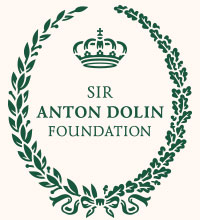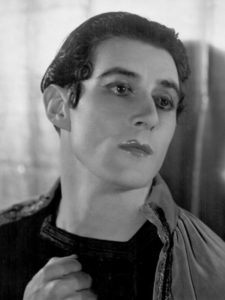Biography
Sir Anton Dolin, born Patrick Healey Kay, was the first internationally acclaimed British Danseur Noble, whose career began with Serge Diaghilev’s Ballets Russes.
Together with Alicia Markova, Dolin was instrumental in the formation of the Vic-Wells Ballet, founded by Lilian Baylis and Ninette de Valois, which developed into The Royal Ballet. At that time, Dolin’s reputation was akin to that Rudolf Nureyev later enjoyed.
In 1935, Markova and Dolin left the Vic-Wells Ballet to form their own company, the Markova-Dolin Ballet, which performed and toured for several years. The two young Diaghilev alumni formed one of the great partnerships of classical ballet.
Anton Dolin first performed the role of Albrecht in 1937, partnering Olga Spessivtzeva, who taught him the role and coached him, passing on this ballet’s great tradition. After working with the great Russian ballerina, Dolin was inspired to stage his own production of the 19th century ballet, which was much acclaimed and performed around the world.
In 1940, Dolin joined New York’s newly formed Ballet Theater as a principal dancer. He soon began to stage classics, such as Swan Lake and Giselle, for the company, as well as creating his own choreography, including his own version of Pas de Quatre.
As a dancer, Dolin repeatedly found himself the male star in ballet companies that were launched under his auspices or in which he played an influential role. He became known as an excellent partner. Ninette de Valois defined his style as follows: “In the mid-1920s, his dancing brought a spark of virility to the male classical dance picture. It was Bronislava Nijinska who first brought out his particular virtuoso form of attack”.
In 1949, Anton Dolin founded a new British company, Festival Ballet (which became London Festival Ballet in 1950) with Alicia Markova. As its Artistic Director and Principal Dancer until 1961, he presented an eclectic repertory and toured widely. As a result, the company helped to introduce ballet to many new audiences. The company is now known as English National Ballet.
One of Dolin’s most famous stagings, Pas de Quatre, pays homage to 19th century Romantic ballet with his own choreography for four female dancers, who portray four celebrated ballerinas. In 1957, the choreographer created a modern counterpart for four male dancers in his virtuoso showpiece Variations for Four.
In his early years, as Principal Dancer, Musical Theatre Artist and Actor, later as Artistic Director, Choreographer, Teacher, Coach and Lecturer, Dolin was a familiar figure in the international ballet and theatre world. A witty raconteur, he was the author of six books, including several memoirs.
For his outstanding services to ballet throughout his life Anton Dolin was knighted in 1980 by Her Majesty Queen Elizabeth ll.

